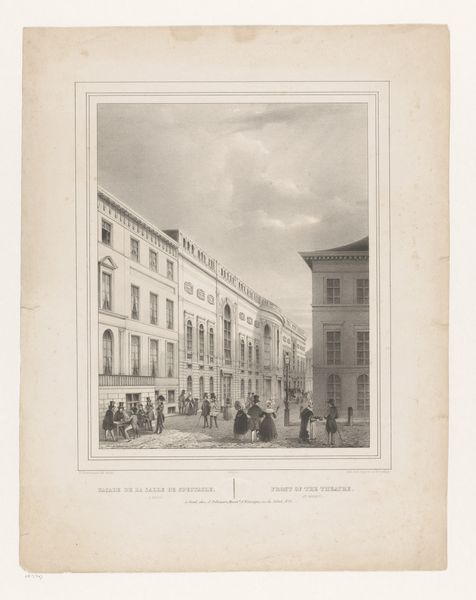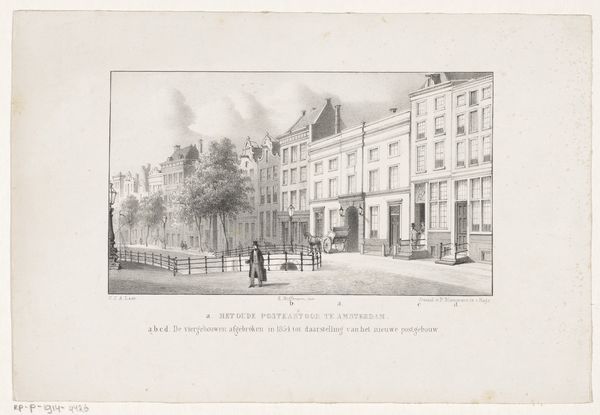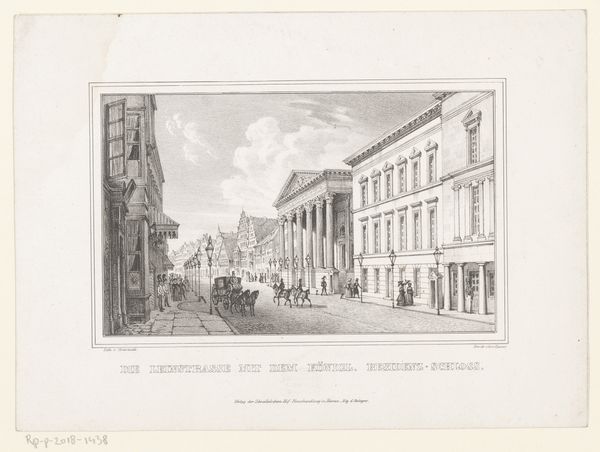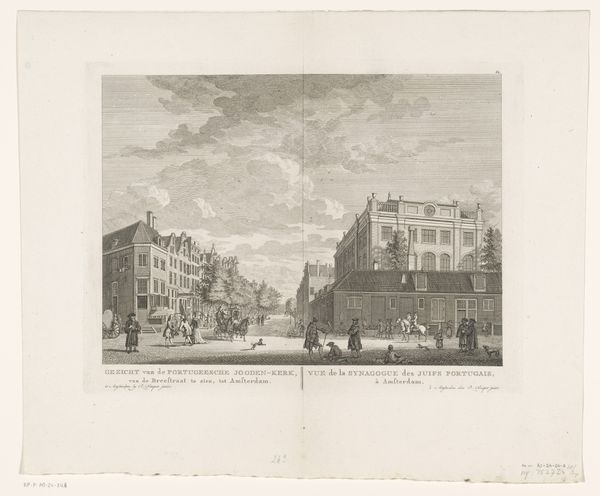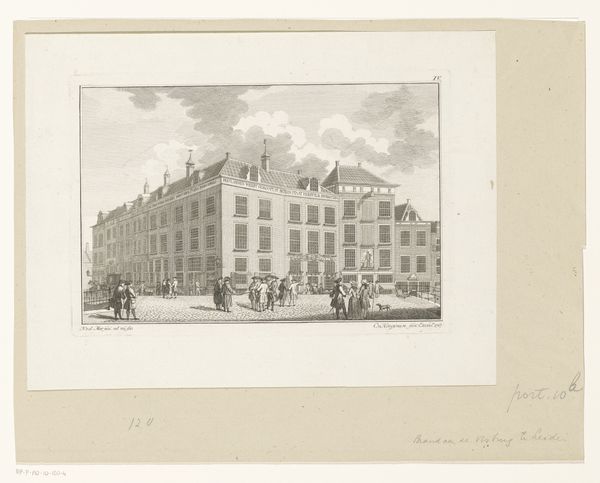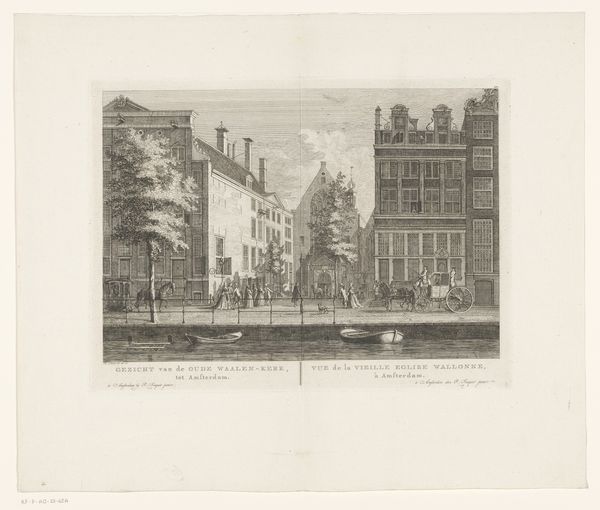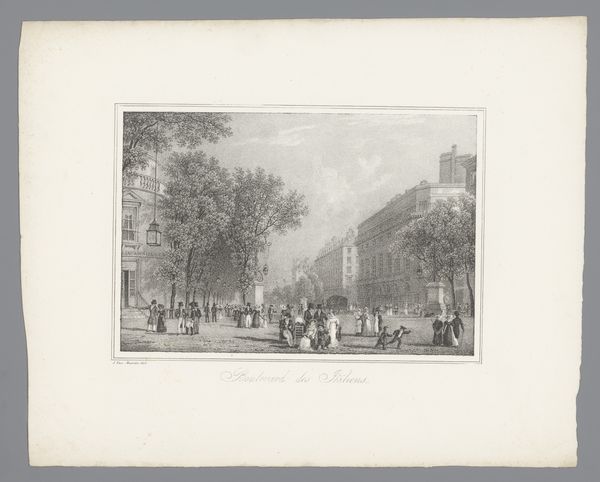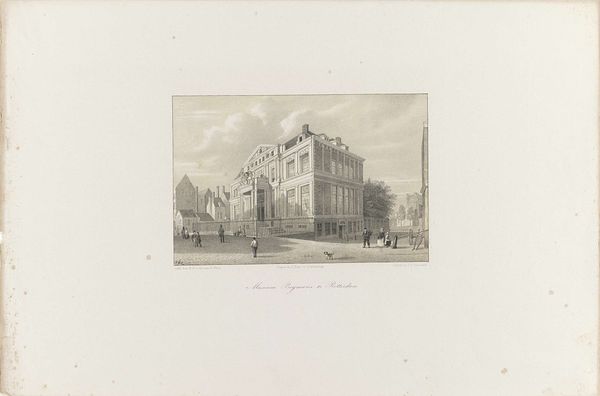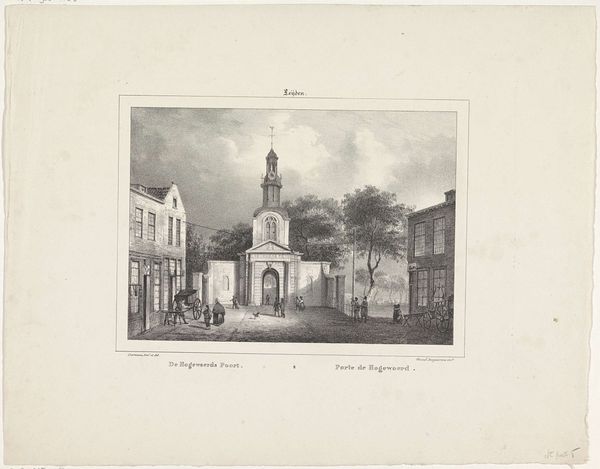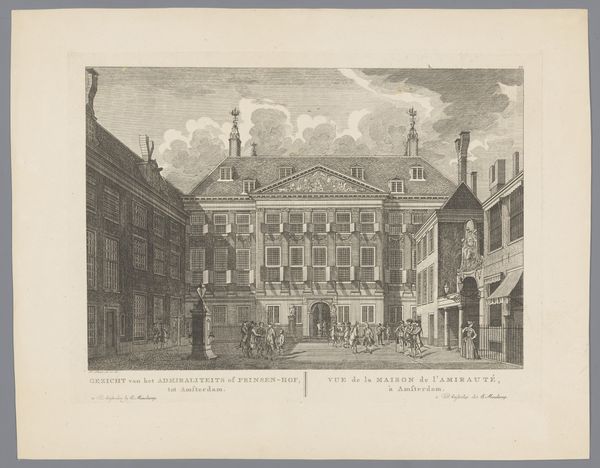
print, engraving
#
pencil drawn
# print
#
landscape
#
romanticism
#
cityscape
#
engraving
Dimensions: height 275 mm, width 345 mm
Copyright: Rijks Museum: Open Domain
This print, "Gezicht op de Gravensteen in Leiden," was made by J.B. Clermans using a technique that allowed for the creation of multiple identical images. The print's sharp lines and controlled tonal range are characteristic of engraving. This process involves meticulously cutting lines into a metal plate, which is then inked and pressed onto paper. The resulting image is a precise representation of the artist's vision, but also a testament to the engraver's skill and labor. This contrasts greatly with the supposed immediacy of painting, which is seen as more autographic. Engraving played a crucial role in disseminating information and reproducing artworks before the advent of photography. Prints like this one democratized access to art and knowledge. They became a valuable commodity within a burgeoning market for images. By appreciating the material and processes involved, we recognize the social and economic forces that shaped its production. So, next time you look at a print, consider the labor and ingenuity that went into its creation, and how these are tied to wider social issues of labor, politics, and consumption.
Comments
No comments
Be the first to comment and join the conversation on the ultimate creative platform.
